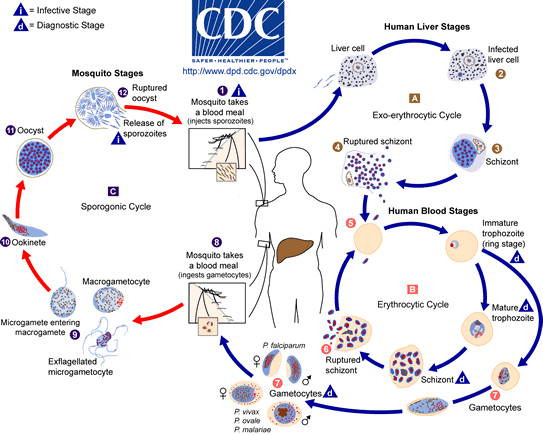QUESTION
What should I take in this condition? After treatment I came to know that Rechocin should be taken for 6 months 2 weekly.
ANSWER
I am not sure I understand your question, but if you have been diagnosed with trophozoites of Plasmodium vivax in your blood, then you can be treated with normal anti-malarials (the World Health Organization recommends artemisinin-based combination therapies for first line treatment of uncomplicated malaria, but depending where you are, you might even just be able to take chloroquine), as these kill the blood stages of malaria. To prevent relapse, caused by hypnozoites dormant in the liver, you should talk to your doctor about the possibility of also taking a course of primaquine, which usually lasts 14 days. This drug is not suitable for people with G6DP deficiency, however, so you may need a test for this condition before you can take the treatment.
